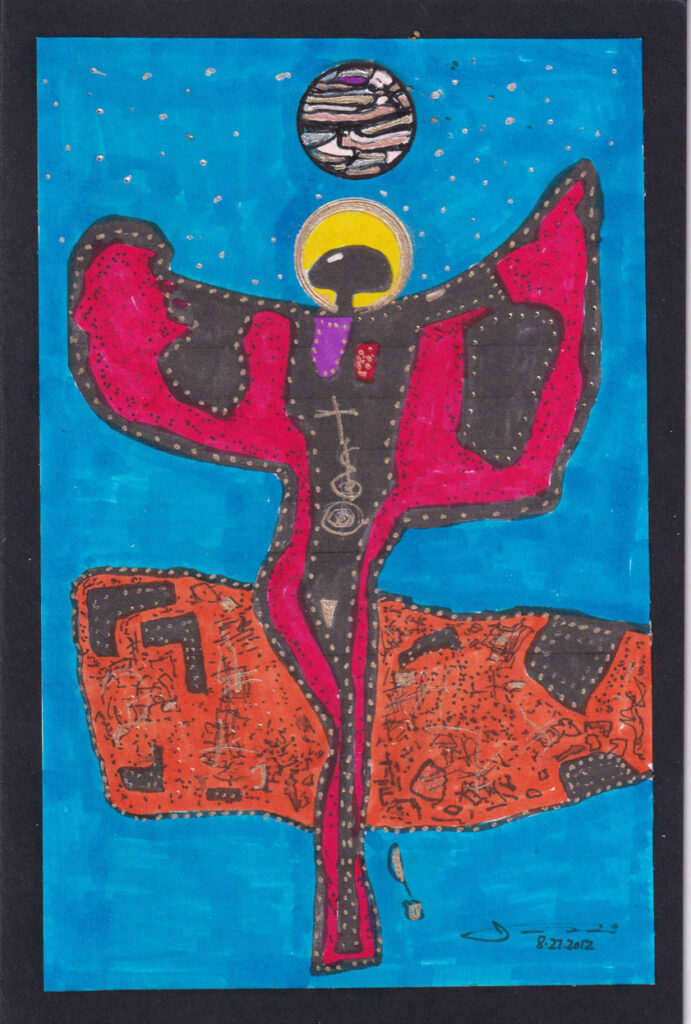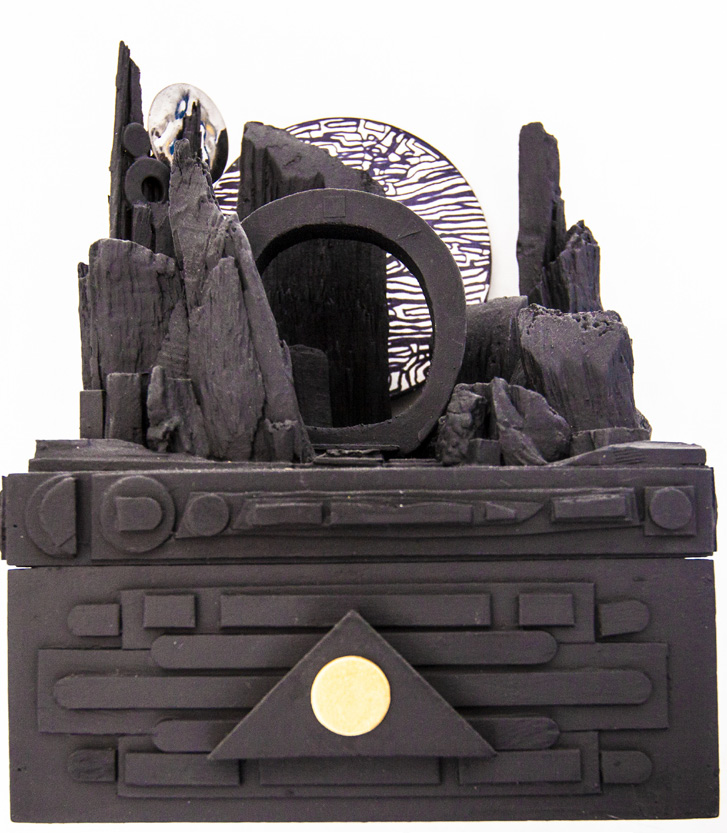For quite a while, the world has been engulfed in malaise from the consequences of the pandemic with a physical and spiritual toll taken as humanity stays separated from loved ones and friends. For glimmers of the forces of the spirit, nearly extinguished by our isolation, a yearning to overcome today’s challenges is possibly found in personal interpretations of the divine.

Photo by Bob Van Lindt
Sculptor Joseph Paul Fox has felt this longing for transcendence mostly through artwork he now believes was not of his own volition. For many years, he enjoyed earning a living with his hands in the building trades, alternating that work with serving in the US Army, never intending to be an artist. He was satisfied with his practical skills repairing railroads and painting buildings but he discovered another side to himself that came into full bloom thirty years ago.
As he writes in his artist’s statement, “Some 30 years ago, I had an epiphany of sorts, an experience of intuitive perception…bringing me to a new sense of joy”…in a new urgency to build large mysterious abstract sculptures. As a tradesman, his relationship to the world around him had always been very concrete without any thought about spiritual significance. A “new and wonderful feeling enveloped (him) inside” simultaneously bringing him inner suffering, because he could not communicate to those around him what was happening to him. “What he saw as a new vocation” of creativity, he now believes originated from a place far beyond everyday world, bringing him new peace in his mind and head.
As a result, he saw his life as a joining of self with what he could only call “GOD.” He viscerally felt deeply connected with celestial energies which he characterized as coming from an “ancient home” beyond his prosaic life. He sawed, scraped, nailed and painted his pieces intuitively with gusto, without envisioning their outcomes, and many times he did not know how he did the works, creating them as if in a trance. He felt the only way he could accomplish what he was doing was with the help of an almost indescribable force guiding him.

From an early age, he loved studying ancient civilizations and cultures foreign to his own, especially those of Egypt, Japan and the African continent. As he matured, he read extensively, visiting and working in museums throughout New York City, where new strands of knowledge from these experiences brought him great psychic benefits –to figuratively access worlds far beyond the five NYC boroughs. He was being educated spiritually, with an intangible widening of his creative horizons.
His sculptures are now manifested “out there, somewhere in the cosmos,” and he described himself in this new iteration as “Co-Creator,” attempting to live in truth beyond reliance upon any particular philosophy. He just knew that he was becoming a conduit of something greater than (himself), a recipient of a creative gift given by the Spirit of God, uniting his inner knowledge with his physical skill.” This experience he saw as surpassing any known earthly joys and he could only call it a “Theosis.”
One of the first displays was his 8-foot tall wood sculpture, “Antecanus,” referencing an African canine figure, with spiked tendrils jutting out from its head. It was what Fox saw as a Seraphic guardian of another one of his large pieces, “Ark of Soul,” created to be a symbolic protector of scriptures and oracles. He built “Antecanus” in two days, at that time in his backyard, and in retrospect he felt it also could refer to the Sirius ‘dog star’, the brightest star in Canis Major; interpreted by the ancient Egyptians as the goddess of yearly Nile inundations, symbolic of fertility and life’s renewal.

He then documented another angelic vision, seeing it essentially as a “Seraphim,” which he drew on paper in vibrant colors, feeling subliminally that it represented spirit at the pinnacle of the celestial hierarchy, a guardian of God symbolizing divine light and purity. The image of the seraph followed Fox in his dreams for two decades and he repeatedly incorporated visions of it in his work throughout the years.
Through his readings and studies he garnered respect for the Shinto spiritual discipline of Japan, an affinity culminating in his depiction of a mythological Japanese shrine in miniature, entitled “Kitsune” ––his being partly inspired by his own surname and representing foxes, protectors of rice, the staff of life and survival for the Japanese people.
He also built a small spiritual reliquary box he named, “Stargate,” its top displaying what he saw as a sacred portal to the universe; the vessel virtually holding and protecting the human soul until it travels from its earthly resting place to the beyond.
Fox has interpreted connections to the spiritual world ever since his enigmatic epiphany thirty years ago and this concentration has continued into today. Having solo exhibits of his sculptures in the past, the large majority of his work now lies in storage because, although the pieces are artistically and spiritually forceful, they are not “trendy.” So, they have been relegated to warehouses. Unlike artists who have some means of additional support, he has accomplished his work on his own, without outside financial backing, and it has been a great struggle for him to bring his work to the public today.

It has become vital for people to feel a sense of awe within their physical confines. Artists bringing beauty, truth and consolation to humans, through mystical creative powers, have a decisive role to play today while bringing a sense of divine significance, so we may survive and ultimately thrive. Joseph Paul Fox brings a soulful sustenance to our current situation, helping us to overcome today’s adversities under divine guidance —now so greatly needed by us all.
Joseph Paul FoxMember, Artists Rights Society, Inquiries: flatbushfox@gmail-com





Leave a Comment